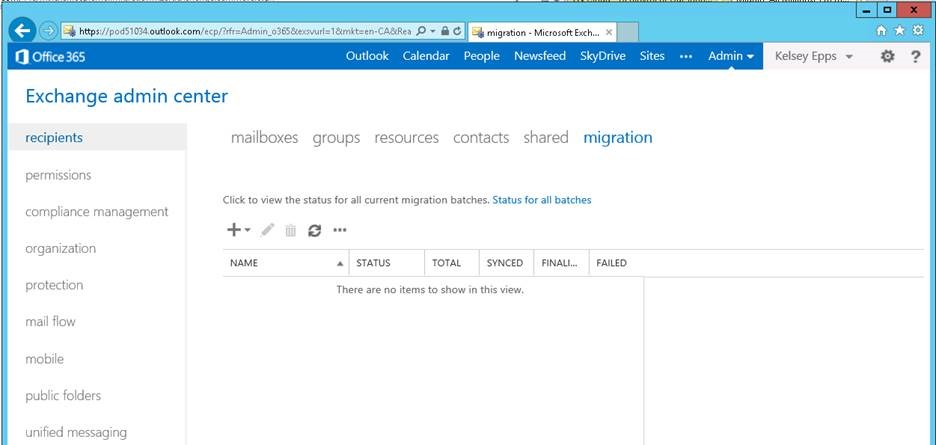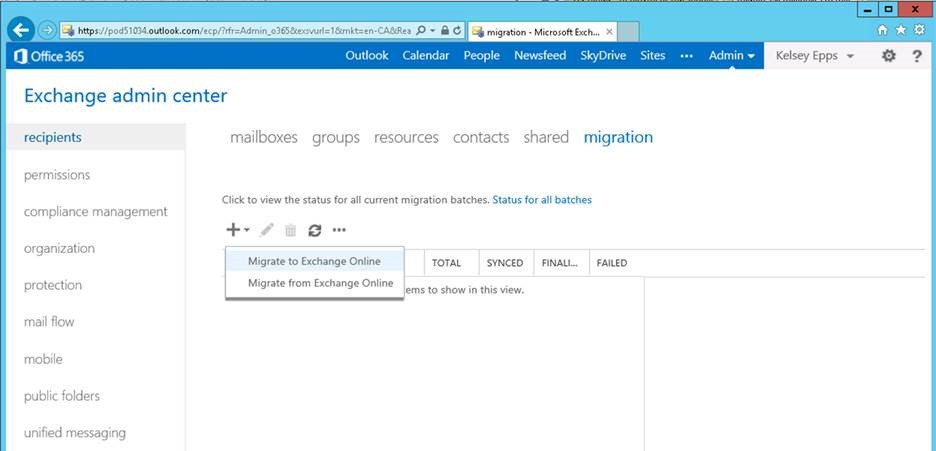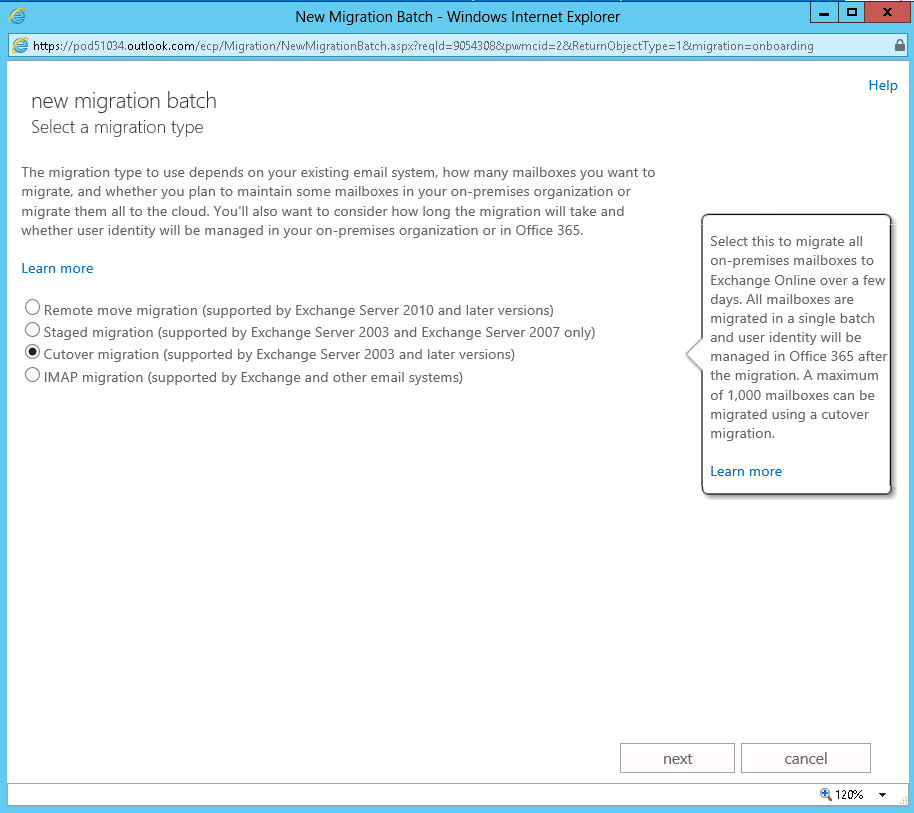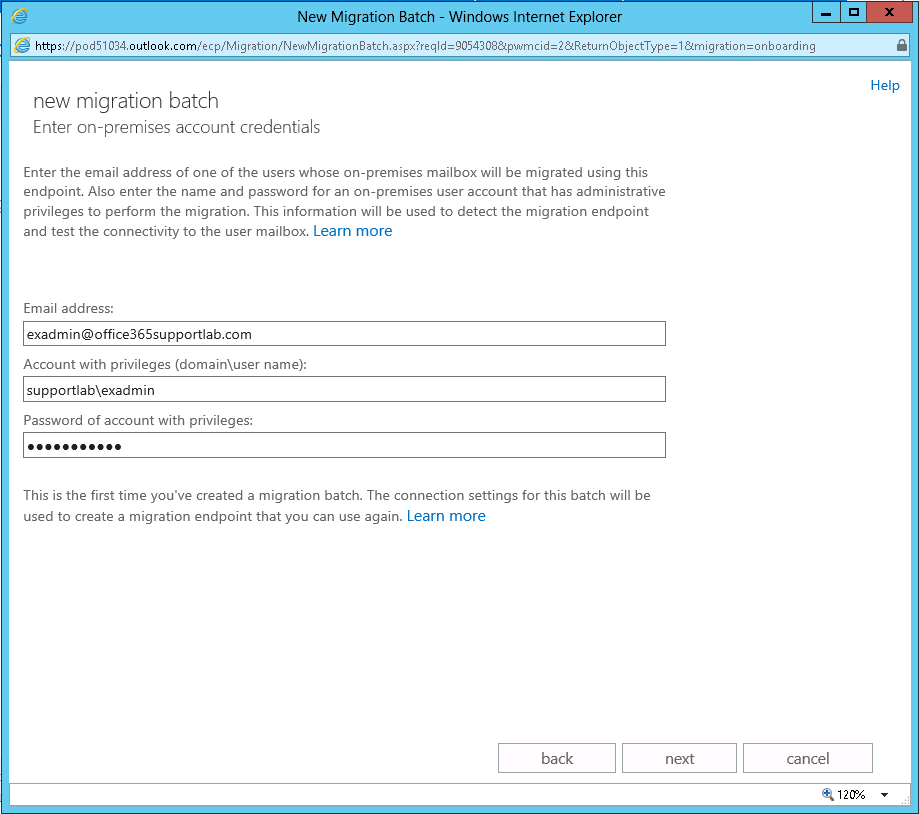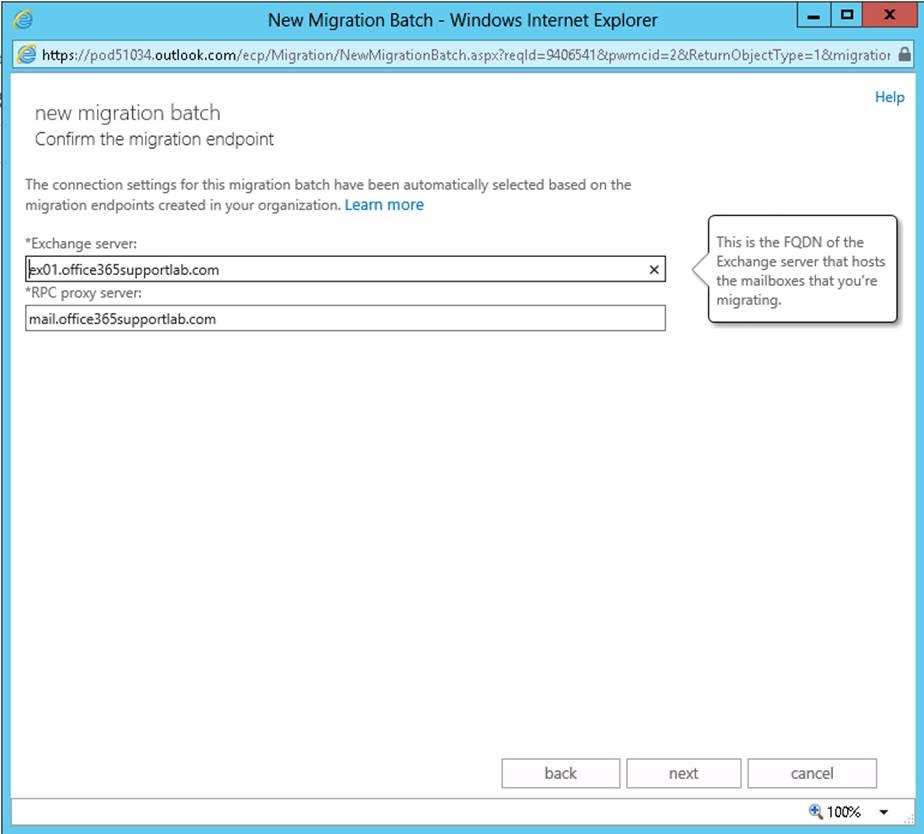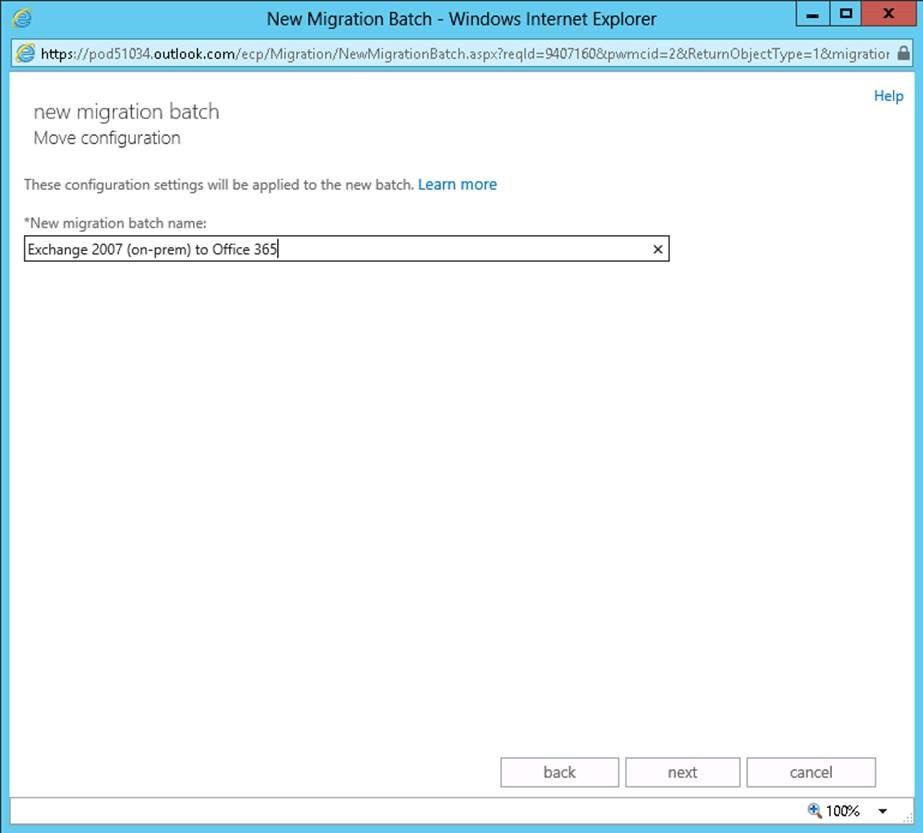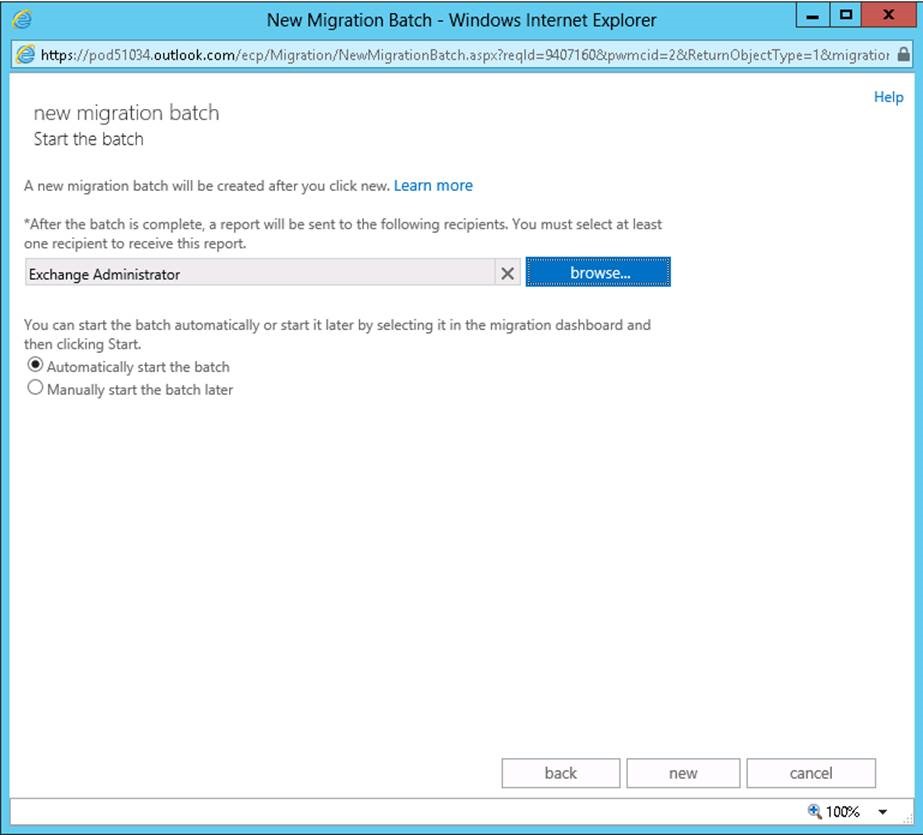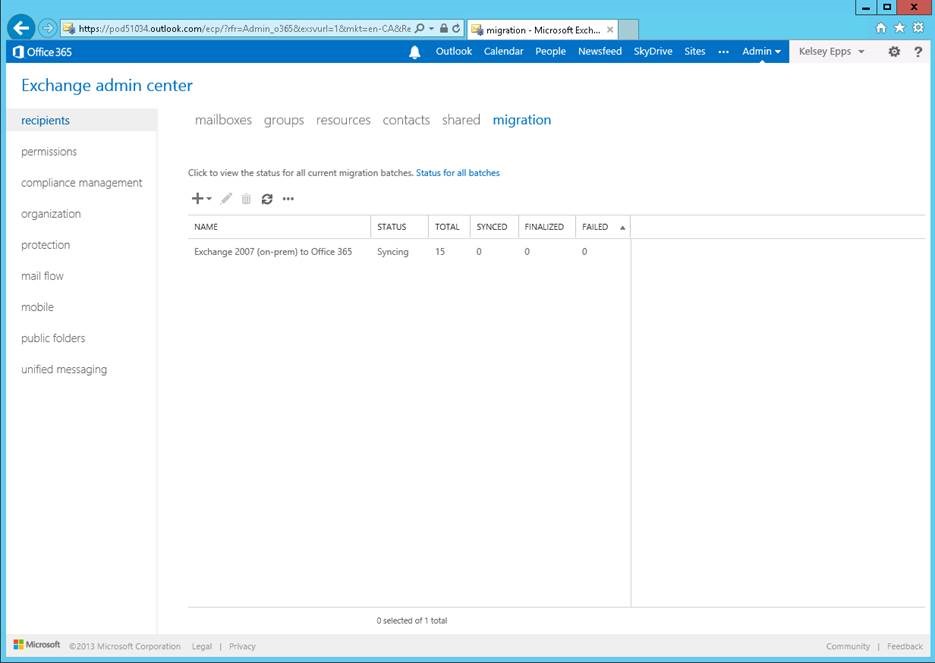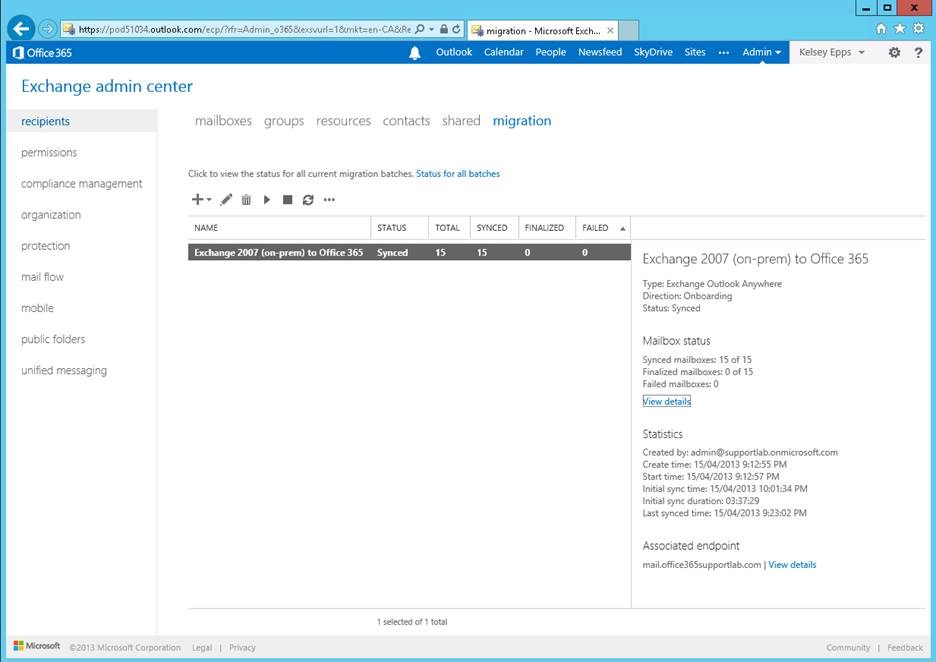From the MVPs: Exchange 2007 cutover migration to the NEW Office 365
This is the 26th in our series of guest posts by Microsoft Most Valued Professionals (MVPs). You can click the “MVPs” tag in the right column to see all the articles.
Since the early 1990s, Microsoft has recognized technology champions around the world with the MVP Award. MVPs freely share their knowledge, real-world experience, and impartial and objective feedback to help people enhance the way they use technology. Of the millions of individuals who participate in technology communities, around 4,000 are recognized as Microsoft MVPs. You can read more original MVP-authored content on the Microsoft MVP Award Program Blog.
This post is by Kelsey Epps, of the Concepps Group, an Office365 MVP. WEB: https://conceppsgroup.com BLOG: https://office365support.ca Thanks very much, Kelsey!
A cutover migration is the simplest way to get all your existing email into Office 365. As the name implies, it’s a cutover from one service to another. Cutover migrations are supported for Exchange 2003, 2007 and 2010; for organizations with fewer than 1000 mailboxes. The setup and process is straightforward and nothing complicated. With any successful migration, some planning and testing of existing infrastructure is invaluable. Make sure that you plan and test the migration prior to trying to implement.
PLANNING
Before we can attempt the migration, we need to know what we are going. Microsoft has done a great job of providing good quality information for administrators to use, to plan the migration to Office 365. I always use the Exchange Deployment Assistant as a guide for all my migrations. This site is up to date and will cover most of all the migrations scenarios to Office 365.
1) Open the Exchange Deployment Assistant site.
2) Once the site is launched, you are presented three options. Since I am doing a simple cutover migration from Exchange Server 2007, I am going to use the Cloud Only option.
3) Click Cloud Only.
4) You are now asked a series of questions on end state goals and existing setup.
5) Answer all the questions.
6) Click the Next arrow.
7) The Exchange Deployment Assistant will generate a step by step guide for you to follow. Make sure to read and understand what you are doing.
TESTING EXISTING SETUP
Using the guide from the Exchange Deployment Assistant, we need to make sure that our Exchange 2007 infrastructure supports Outlook Anywhere (RPC over HTTP) and Autodiscover. Use the guide to verify the Exchange 2007 setup. Once the setup is verified to be correct, use the Microsoft Remote Connectivity Analyzer to verify Outlook Anywhere (RPC over HTTP) . Make sure that you have assigned the correct permissions to the mailboxes that you are migrating.
1) Open the Microsoft Remote Connectivity Analyzer site.
2) Select the Outlook Anywhere (RPC over HTTP) test.
3) Click Next.
4) Enter all the information that is requested. You will want to verify that you are using Autodiscover to detect server settings.
5) Enter the Verification code.
6) Click Perform Test.
Once the test is successful, you can continue to the next step. If it’s successful with warnings, review the warnings and correct them if needed. If the test fails, use the report generated and the guide (Exchange Deployment Assistant) to resolve the issues.
Use the guide and assign the correct permissions to the mailboxes. If you don’t assign the migration account permissions on the mailboxes, they will not migrate.
CONFIGURE CUTOVER MIGRATION
1) Open Internet Explorer.
2) Login to the Office 365 Admin Center.
3) Open Exchange Admin Center.
4) Click Migration.
5) Click the + drop down menu and select Migrate to Exchange Online.
6) Select Cutover migration (supported by Exchange Server 2003 and later versions).
7) Click Next.
8) Enter on-premises account credentials (this is the same account that you gave full acccess permissions to on all the mailboxes).
9) Click Next.
When configured properly, Autodiscover should resovle the on-premise Exchange Server and the RPC Proxy Server
10) Click Next.
11) Enter a name for the New Migration Batch.
12) Click Next.
13) Select a user to get a report once the migration is completed. Multiple accounts can be selected. If you are ready to start the migration, then automatically strat the batch. If you are not ready to start the migration, then select manually start the batch later.
14) Click New.
15) The new migration batch is created and the status is set to syncing.
This is where we wait for the migration to happen. Depending on the number of accounts and the ammount of data, this can take some time. You can view the migration details, by clicking View Details under the Maibox Status .
You will see the accounts provisioning in Office 365 and then start to sync from Exchange 2007 to Office 365.
Completed Syncronization
COMPLETE THE MIGRATION
When all the accounts are provisioned and the sync from Exchange 2007 to Office 365 is completed, you will get a report emailed to you. Once you get the report, you can complete the migration process.
1) Migrate Public Folders – Microsoft has released a whitepaper for the companies that have public folders to migrate to Office 365. Migrate from Exchange Public Folders to Microsoft Office 365.
2) Assign Office 365 licenses to all the users. Use this BLOG post - Creating Cloud Users for the NEW Office 365.
3) Verify that all the DNS records are updated and pointed towards Office 365 services. Use the DNS section in this BLOG post - Adding and Verifying a Domain for the NEW Office 365.
WARNING – Once you change the MX record to point at Office 365, there is some DNS replication time. During this time, email will be delivered to either Exchange 2007 or Office 365. It’s important to keep your migration batch job running for up to 72 hours after switching the MX record.
4) Configure the desktops to use Office 365 services - Use this BLOG post - Configuring Desktops for the NEW Office 365.
5) Once you are comfortable that all the email is migrated to Office 365 and the MX record DNS replication is completed, you can stop the migration batch job.
At this point the migration is complete and you can retire your Exchange 2007 services. Everyone should be happy cloud users.
View the complete series on my BLOG - Getting to know the NEW Office 365

